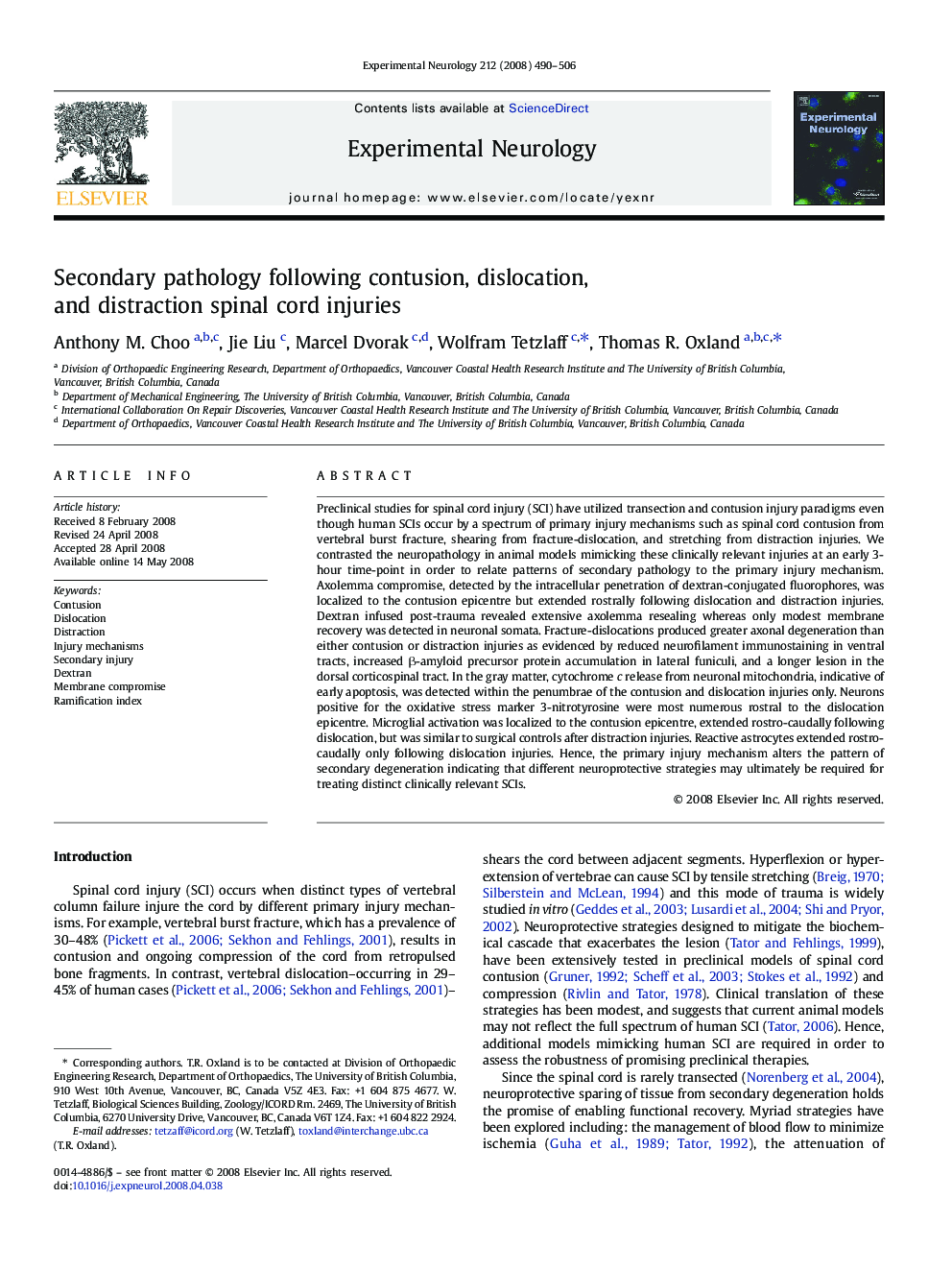| کد مقاله | کد نشریه | سال انتشار | مقاله انگلیسی | نسخه تمام متن |
|---|---|---|---|---|
| 3056575 | 1186570 | 2008 | 17 صفحه PDF | دانلود رایگان |

Preclinical studies for spinal cord injury (SCI) have utilized transection and contusion injury paradigms even though human SCIs occur by a spectrum of primary injury mechanisms such as spinal cord contusion from vertebral burst fracture, shearing from fracture-dislocation, and stretching from distraction injuries. We contrasted the neuropathology in animal models mimicking these clinically relevant injuries at an early 3-hour time-point in order to relate patterns of secondary pathology to the primary injury mechanism. Axolemma compromise, detected by the intracellular penetration of dextran-conjugated fluorophores, was localized to the contusion epicentre but extended rostrally following dislocation and distraction injuries. Dextran infused post-trauma revealed extensive axolemma resealing whereas only modest membrane recovery was detected in neuronal somata. Fracture-dislocations produced greater axonal degeneration than either contusion or distraction injuries as evidenced by reduced neurofilament immunostaining in ventral tracts, increased β-amyloid precursor protein accumulation in lateral funiculi, and a longer lesion in the dorsal corticospinal tract. In the gray matter, cytochrome c release from neuronal mitochondria, indicative of early apoptosis, was detected within the penumbrae of the contusion and dislocation injuries only. Neurons positive for the oxidative stress marker 3-nitrotyrosine were most numerous rostral to the dislocation epicentre. Microglial activation was localized to the contusion epicentre, extended rostro-caudally following dislocation, but was similar to surgical controls after distraction injuries. Reactive astrocytes extended rostro-caudally only following dislocation injuries. Hence, the primary injury mechanism alters the pattern of secondary degeneration indicating that different neuroprotective strategies may ultimately be required for treating distinct clinically relevant SCIs.
Journal: Experimental Neurology - Volume 212, Issue 2, August 2008, Pages 490–506